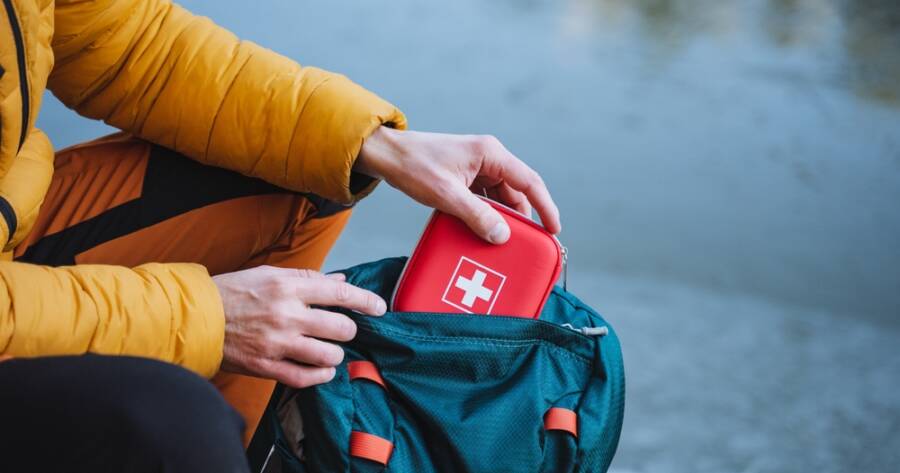Emergency preparedness kits are vital tools that help families and individuals stay safe during unexpected situations. From natural disasters to power outages, being prepared with the right essentials can make all the difference. Knowing what items to include can ensure you and your loved ones are ready to face various emergencies with confidence. Here are key items that should go into every emergency preparedness kit.
One-Stop Emergency-Preparedness Shops
My Patriot Supply and 4Patriots are well-known for their comprehensive emergency preparedness kits. My Patriot Supply provides a wide range of items, including long-term food storage, water filtration systems, and survival gear like solar generators. They focus on food independence and offer products such as seed vaults for sustainable gardens.
4Patriots similarly offers emergency food kits, solar-powered items, and portable power solutions. Their products emphasize both practicality and reliability for disaster scenarios, with compact kits suited for various situations, from power outages to extended outdoor emergencies.
If these companies have inspired you to create your own emergency preparedness kit, read on to discover what you’ll need.
Water and Food Supplies
In any emergency, access to clean water and food is essential. Experts recommend at least one gallon of water per person per day, ideally enough to last three days. This amount can cover drinking, cooking, and some cleaning needs.
Non-perishable food items should also be included. Canned goods, energy bars, and dried fruits are excellent choices because they don’t spoil quickly. It’s best to check expiration dates every few months to keep items fresh and usable.
First Aid Kit
A comprehensive first aid kit is a must-have in any emergency preparedness kit. This kit should include bandages, gauze, antiseptic wipes, adhesive tape, and any necessary medications. Pain relievers, antihistamines, and tweezers are also valuable additions that can handle a variety of minor injuries.
Adding any personal medication is crucial for people with medical conditions. If anyone in your household has specific needs, include a few days’ supply of any prescription medicines.
Tools for Light and Communication
During power outages, light and communication tools can help keep you informed and safe. A flashlight with extra batteries is a basic item everyone should have. Consider adding a hand-crank or solar-powered flashlight to avoid reliance on batteries.
A battery-operated or hand-crank radio is also a smart addition. During emergencies, a reliable radio provides updates on weather and rescue services. With a phone charger, like a power bank, you can keep your mobile devices ready for use if needed.
Sanitation and Personal Hygiene Supplies
Keeping clean in an emergency can help prevent illness. Pack basic hygiene items such as hand sanitizer, moist towelettes, and garbage bags. These can help maintain cleanliness when running water is unavailable.
Personal items, like toothpaste, a toothbrush, soap, and feminine hygiene products, can ensure comfort and hygiene. For families with young children, remember to include baby wipes and diapers to cover their needs too.
Shelter and Warmth Essentials
In case you need to leave your home or face extreme weather, having items that provide shelter and warmth can be life-saving. Include emergency blankets, which are compact but excellent for retaining body heat. Consider adding a tarp or plastic sheeting to create a makeshift shelter if needed.
Extra clothing, such as warm socks, gloves, and a hat, can help protect against cold weather. A sleeping bag or compact tent may be useful if you need to stay outside or in an unfamiliar environment for an extended period.
Important Documents and Personal Items
Keeping copies of essential documents can be crucial in emergencies. Important items include identification cards, insurance policies, medical records, and bank account information. It’s best to store these in a waterproof, portable container.
If possible, include a small amount of cash since credit card machines and ATMs might not work during an emergency. Any other personal items that provide comfort or help with daily routines, such as glasses, extra keys, or spare batteries, should be considered as well.
Multi-Purpose Tools and Basic Supplies
Multi-purpose tools are handy in any emergency situation. A Swiss Army knife or multi-tool can help open cans, cut rope, or serve various other needs. Duct tape, a whistle, and sturdy rope are also practical supplies that can come in handy.
Pack maps of your local area in case you need to navigate without GPS. Knowing where nearby hospitals, shelters, and supply centers are located can be valuable information in a crisis.
Pet Supplies for Furry Family Members
If you have pets, make sure your emergency kit includes essentials for them too. Pack food, water, and a portable bowl for each pet. Medications, a leash, and any comfort items that your pet might need can help them stay calm during stressful situations.
Having a current photo of your pet can be helpful if you get separated. Also, consider packing a copy of their medical records, including vaccinations, to ensure they stay healthy.
Prepare Today for Peace of Mind Tomorrow
Emergency preparedness kits are about ensuring that you have the necessary supplies to weather unexpected situations safely. By packing essentials like food, water, first aid items, tools, and hygiene products, you’re making a plan to keep your family and pets safe and secure. Regularly reviewing and updating your kit means you’ll be ready for anything that comes your way.

